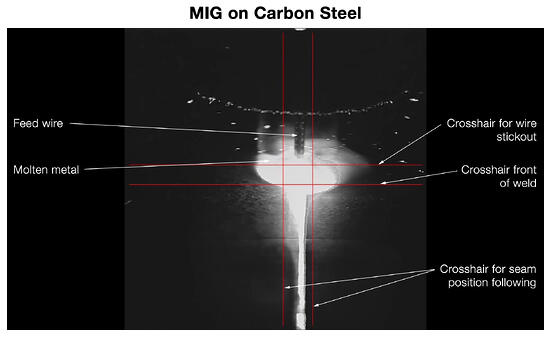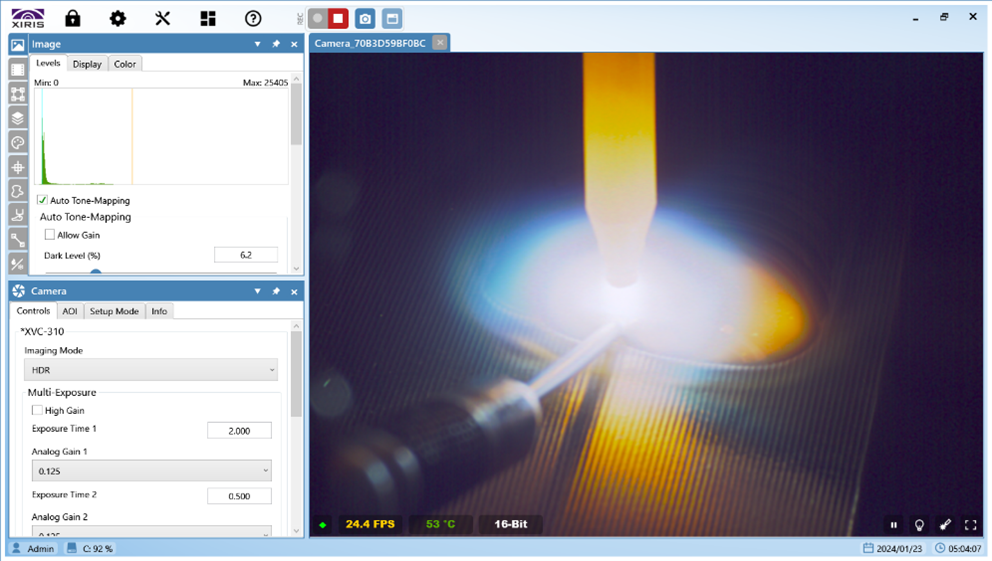As the result of recent improvements in electronics, Weld Cameras with High Dynamic Range (HDR) imaging are now able to overcome many of the traditional limitations of weld monitoring. HDR imaging allows operators to remotely monitor clear detail of the brightest weld tip and its dark surrounding background, with a range of brightness that greatly exceeds 1,000,000:1. This brightness range ensures the clarity of images displaying an entire weld scene.
The image below demonstrates the increased brightness range provided by HDR Imaging. It has been taken from a Xiris XVC-O Weld Camera viewing a MIG welding process on carbon steel. Note that with the use of a weld camera, operators are able to see clear images of those elements of the MIG process which are critical to controlling and maintaining a high quality weld.

A high quality weld relies on a number of variables, including penetration, position, arc stability, speed, and bead configuration.
An integral part of arc stability is maintaining the stability of the wire feed. An unstable wire feed results in an unstable arc, which causes both higher levels of spatter and uneven weld beads. In the image above, the wire stickout is in the desired position directly over the seam. Spatter is kept to a minimum, resulting in a clean looking finished weld bead. With the increased brightness range, the leading edge of the weld pool is clearly visible, and we see that good wetting is taking place.
The use of a weld camera and monitoring software can assist operators in seam positioning by overlaying crosshairs on the view screen. These crosshairs can also be used as a reference point when monitoring the wire stickout and weld pool size.
HDR Imaging also allows operators to easily monitor:
- Shape, position, and orientation of the torch relative to the parent material and seam.
- Extent and shape of the shielding gas around the weld arc. An asymmetrical shape indicates a problem with gas flow.
- Shape and size of the weld arc. This indicates if the weld head is close enough and if the arc is functioning correctly. A non-symmetric shape or change in shape indicates a change in part alignment.
- Melt and solidification of the weld pool. Proper melt and solidification indicates the weld is occurring free of impurities
- Consistency of the weld bead. If the weld bead is free of undercut and there are no sunken welds, it indicates correct parent material melt and alignment to the weld head.
- Presence of dross or porosity. Impurities indicate metallurgical or gas input problems.
Conclusion
A Weld Camera with HDR imagining allows operators to monitor the entire anatomy of a weld, providing clear definition of both the bright region of the arc and the darker background. Without this capability, the crucial details that influence weld quality and productivity may not be visible to the operator.
Tweet Tweet, we're on Twitter too! Are you?








